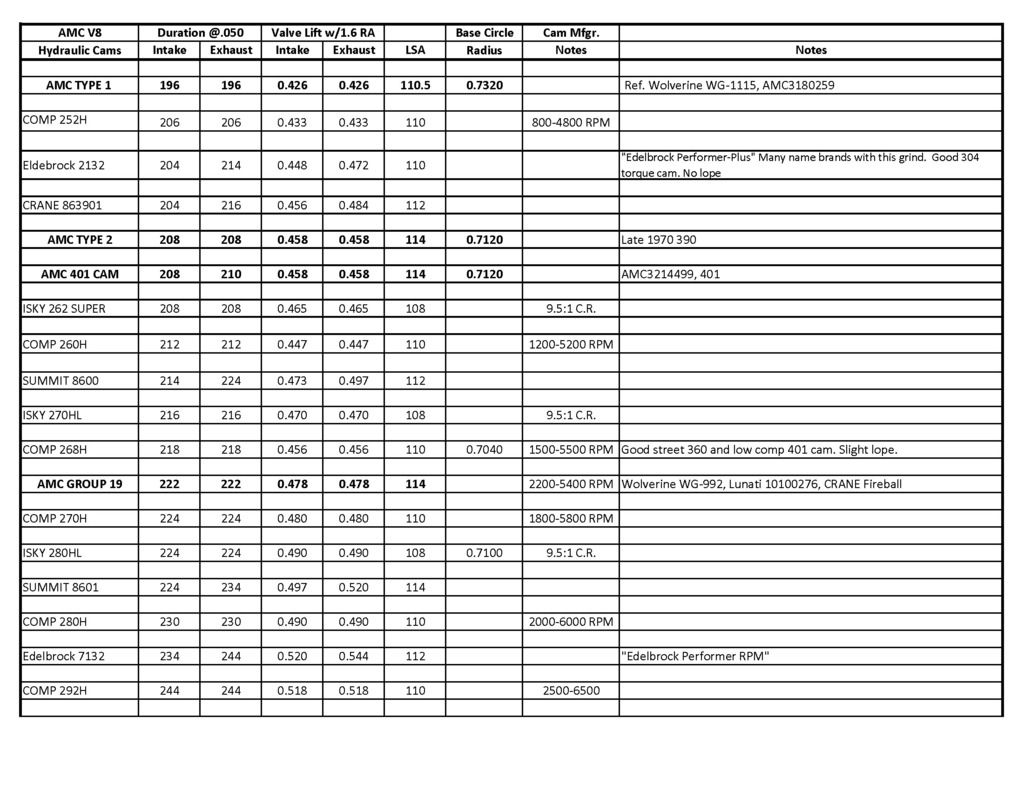that was the best FSJ i've owned.
Can you get a torquey 401 on the cheap?
Collapse
X
-
Originally posted by HankrodRistows right.................again,
Originally posted by Fasts79Chief... like the little 'you know what's' that you are.
Originally posted by Fasts79ChiefI LOVE how Ristow has stolen my comment about him ... "Quoted" it ... and made himself famous for being an ***hole to people. Hahahahahahahahahha!
It's like you're unraveling a big cable-knit sweater that someone keeps knitting...and knitting...and knitting...and knitting...
-
-
by far my best FSJs i've ever own going to be a sad day when she meets theOriginally posted by Ristowthat was the best FSJ i've owned.

 87' Grand Wagoneer
87' Grand Wagoneer
401/727/229, Currently:RUNNING
84 J10/20 hybrid 258/727/208 Daily Driver
80' J10 4BT/AX-15/208
74' J10 Go Grabber Green Sold
Originally posted by Heavy_Metal_Thunder_81Inferior Chevy
Comment
-
-
You realize a stock 401 already makes 335 horsepower and 430 foot-pounds of torque, right? Granted that was 1971. The only real difference between that engine and yours is the compression ratio. A higher compression ratio increases power at all engine speeds.
You're also not looking for low RPM torque. Blasting up interstate grades at 75 MPH takes high RPM torque. You're likely at ~3000 RPM at those speeds in high gear, and even higher if you downshift. You need an engine with high compression that gulps lots of air and fuel at high RPM and a camshaft to support that. Look for a power band of 2500-5500 RPM. It'll require a MASSIVE cooling system and good engine balancing to handle that.
But if you do that, you will kill your low RPM torque and it'll be a dog off the line unless you make extensive drivetrain modifications, like more gear ratios and a higher stall converter.
So....I suggest you build a good compromise engine. Build it to stock 1971 specs, or if you absolutely have to hop it up to make yourself feel better, stay mild on the cam and carb selection. Headers might not be a bad idea as long as you don't mind constant leaks.
BTW, the stock 1971 401 cam was essentially the same grind as the current Edelbrock Performer. One step over that is all I would do on the cam.'72 Jeep Wagoneer Custom, 360 V8
I love how arguements end as soon as Ristow comments. Ristow is right...again.
Comment
-
-
Stocker 401 cam was .286 intake/exhaust lift, RV cam isn't the same.
EDIT: .458 intake/exhaust lift
Originally posted by FSJunkieBTW, the stock 1971 401 cam was essentially the same grind as the current Edelbrock Performer. One step over that is all I would do on the cam.Last edited by babywag; 05-16-2017, 03:34 PM.Tony
88 GW, 67 J3000, 07 Magnum SRT8
Comment
-
-
The 330 hp / 430 tq is a 1971 SAE Gross measurement of a higher compression motor. Don't know if that's the only difference but the compression alone is worth 20 horsepower or therabout.
My '75 motor is rated at 255 HP / 330 tq @ 3300 RPM or so. No slouch but could stand for better out of 401 cubes. The math works out to this thing being slower than an XJ Cherokee flat out, though stronger in the daily driven RPM range.
I decided not to mess with it any more than needed to get it running down the road & then I'll put TBI on it, with an Edelbrock intake, later. Headers are a maybe. If I keep the thing long enough, hey, sky is the limit - but this Jeep might not stick around all that long. Want my money back out of it, but also, FSJ
Comment
-
-
I've read that ~25-30% is difference between gross/net. However manufacturers fudged the numbers to suit their needs, and sometimes flat out lied. Many years ago a restoration shop I worked @ dynoed a low mileage bone stock mustang 302 engine. On the dyno it had ~170HP @ rear wheels, that engine was rated @ 230hp by Ford.
*If* formula is true (big IF due to OEM's shenanigans listed above), a '71 335HP engine would equal a ~250hp net rating.Tony
88 GW, 67 J3000, 07 Magnum SRT8
Comment
-
-
Comment
-
-
That's the difference between flywheel horsepower and rear wheel horsepower, not between gross and net ratings.Originally posted by babywagMany years ago a restoration shop I worked @ dynoed a low mileage bone stock mustang 302 engine. On the dyno it had ~170HP @ rear wheels, that engine was rated @ 230hp by Ford.
Gross ratings were with a blueprinted engine on the stand, open exhaust, open intake, no water pump or accessory loads, full demon tune on ignition curve and carb jetting.
Net ratings were with an engine on the stand, full exhaust and intake systems as installed in the vehicle, all accessories as installed in the vehicle, nerds in lab coats standing around frowning at clipboards.
Both methods were subject to whatever margin of winks and nudges the factory wanted to employ to impress the prospect, or sandbag the competition, or bamboozle the insurance industry. Neither method was expected to be measured at the drive wheels.'85 J20 Old Man Truck, bought @ 65K miles - not great, but better than walking.
Member, FSJ Prissy Restoration Association
High quality junk here: intro thread and slow build thread
Did you know? Willys is just Willis spelled differently, but pronounced the same. Neither Willy nor his apostrophe are involved.
Comment
-




Comment